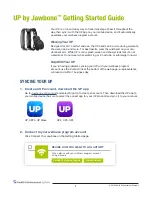
Section 9 — WaveSample and Layer Concepts
Modulators
5
Modulators
About Modulation
To modulate something is simply to cause it to change. Within the voice architecture of the ASR-
10 we begin by setting basic, or manual, levels for the pitch, brightness, and volume of a voice,
and we then modulate those levels in various ways to create movement and dynamics.
Suppose you switch on your stereo, and turn the volume half way up. We can call this the
manual volume setting. It will stay at that level until it’s changed. Now suppose that you take
the volume knob of your stereo and begin quickly turning it up and down, so the volume gets
continuously louder and softer, louder and softer. What you would be doing is modulating the
volume of your stereo. Your hand would be the Modulation Source and volume would be the
Modulation Destination. If you were to take the treble control, and do the same to that knob, you
would be modulating the brightness of your stereo. In this case, brightness would be the
Modulation Destination.
In much the same way we modulate various levels within the ASR-10 (though generally the
approach is less haphazard). There are 15 different Modulation Sources (or modulators) available,
and they can each be independently assigned to vary the manual levels for a great many aspects
of a voice, including real time control of aspects of the current effects algorithm. The parameter
that will be modulated by the modulator is called the Modulation Destination. In a stereo layer,
the right channel will always use the modulation sources and destinations of the left channel.
Selecting a Modulator
On those programming pages where a modulator can be selected to modulate a given
modulation destination, the display shows MOD=__ (short for Modulation Source). A modulator
is chosen by selecting (underlining) the MOD= parameter with the Left/Right Arrow buttons,
and then using the Data Entry Slider or the Up/Down Arrow buttons to select among the 15
available modulation sources.
Tip:
Moving the Data Entry Slider all the way up selects OFF, which is handy if you don’t want a
modulator applied to a particular destination.
Let’s take, for example, the Pitch Mod parameter, which is where you apply modulation to the
pitch of a WaveSample (i.e. Pitch is the modulation destination). Press Edit, then Pitch. Next,
press the Right Arrow button repeatedly until the following display appears:
PITCH
PITCH MOD=LFO * +Ø
Modulator
Modulation Amount
EDIT
Modulation Amount
As shown above, where a modulation source is selected, the parameter immediately to its right
controls the Modulation Amount which controls how deeply the selected modulator will affect the
level to which it is being applied.
Press the Right Arrow button to underline the Modulation Amount, and use the data entry
controls to adjust it. Modulation amount can be positive or negative. A modulation amount of
+00 has the same effect as turning the modulator OFF.
















































